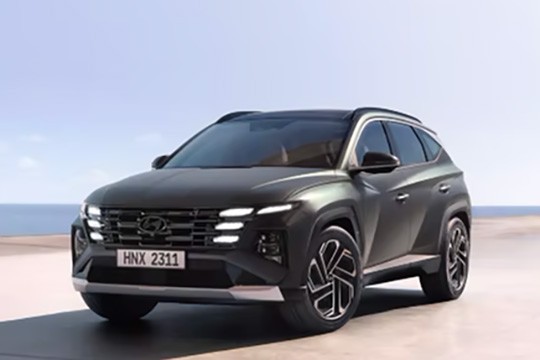Body style: SUV (Sports Utility Vehicle)
Segment: Medium SUV
Infotainment: ![]() Apple CarPlay
Apple CarPlay ![]() Android Auto
Android Auto
Production years: 2023, 2024
 4 Photos
4 PhotosHyundai introduced the fourth generation of the Tucson in 2020 and refreshed it in late 2023 for the 2024 model year, adding more European flavor to its compact SUV.
The Korean automaker was eager to get a bigger slice of the compact crossover segment with the Tucson. As a result, it unveiled the fourth generation just five years after introducing its predecessor in 2015, even if the third generation of this nameplate didn’t look outdated. Unfortunately, the fourth generation suffered due to the world pandemic at first and then because of the microchip crisis that plagued the automotive industry for several years. But that didn’t stop the automaker in its tracks; it pushed harder, only this time, it didn’t completely replace the vehicle; it facelifted it.
At the front, the Tucson featured a cascade grille design flanked by the same number of LED lamps mounted on both sides, although redesigned with thin oblique luminescent blades. Like on the non-facelifted version, the headlights were positioned lower on the bumper in separate side scoops. To make the car look meaner and more off-road oriented, Hyundai added a fat skid plate-looking silver trim underneath the apron, even if the Tucson was not a true off-road monster. Still, that created a powerful impression, and customers seemed to like it.
From its profile, the 2024 Tucson showed the same sculptured doors that made the Korean SUV so distinct on the market. The design team didn’t feel an urge to change that, but instead, they made new alloy wheels for the vehicle. Moving on to the back of the vehicle, the 2024 Tucson received a new bumper with an integrated silver skid plate that adorned it. Its shape and size echoed the one from the front.
Still, the most significant changes happened on the inside. The dashboard was completely new and sported two 12.3” screens arranged side by side under the same glass panel. The one fronting the driver showed the speedometer, tachometer, and other relevant information about the car’s status, while the one that sat atop the center stack was the touchscreen for the infotainment system. Furthermore, the center console was redesigned and featured classic rotary knobs for the HVAC system. Another unusual change was for the steering wheel, which sported four dots instead of the H badge. Those four dots correspond to the H letter in Morse code.
Under the hood, the European version of the Tucson got a 1.6-liter turbocharged gasoline engine featuring direct fuel injection, offered in two power levels of 150 PS (148 hp) and 180 PS (178 hp), respectively. Hyundai offered the SUV with either a front or an all-wheel drive system, with either a six-speed manual or a seven-speed automatic (dual clutch). A 1.6-liter full-hybrid was also available.
HYUNDAI Tucson (EU) 2023, 2024
Information about this model's engines has not been yet made public, but we will add it as soon as the car is launched or more data becomes available



